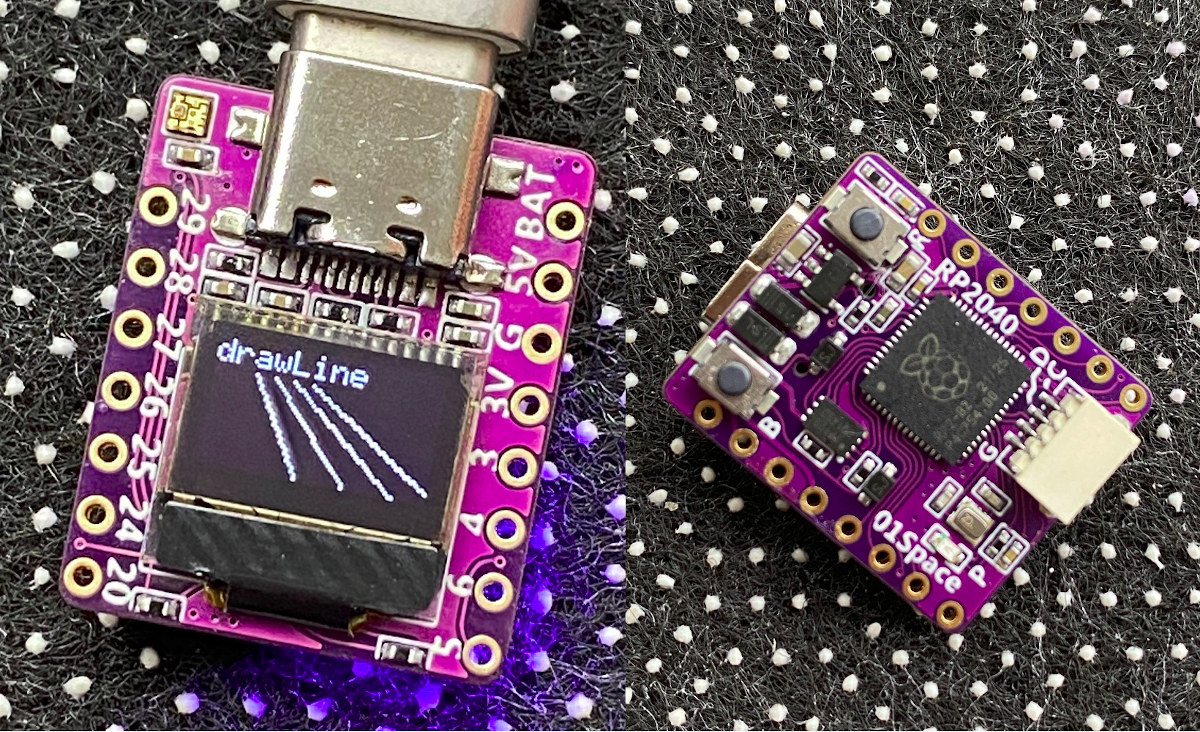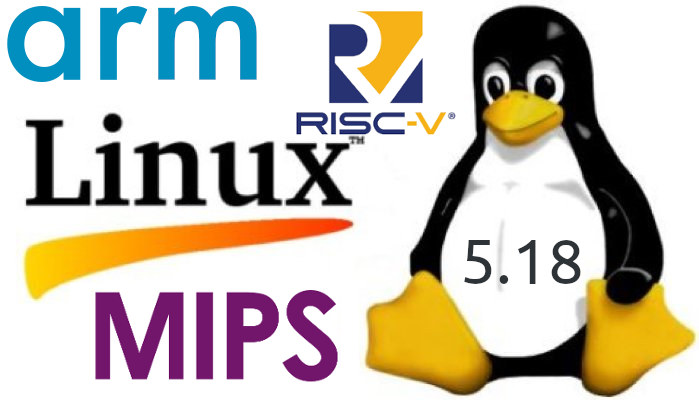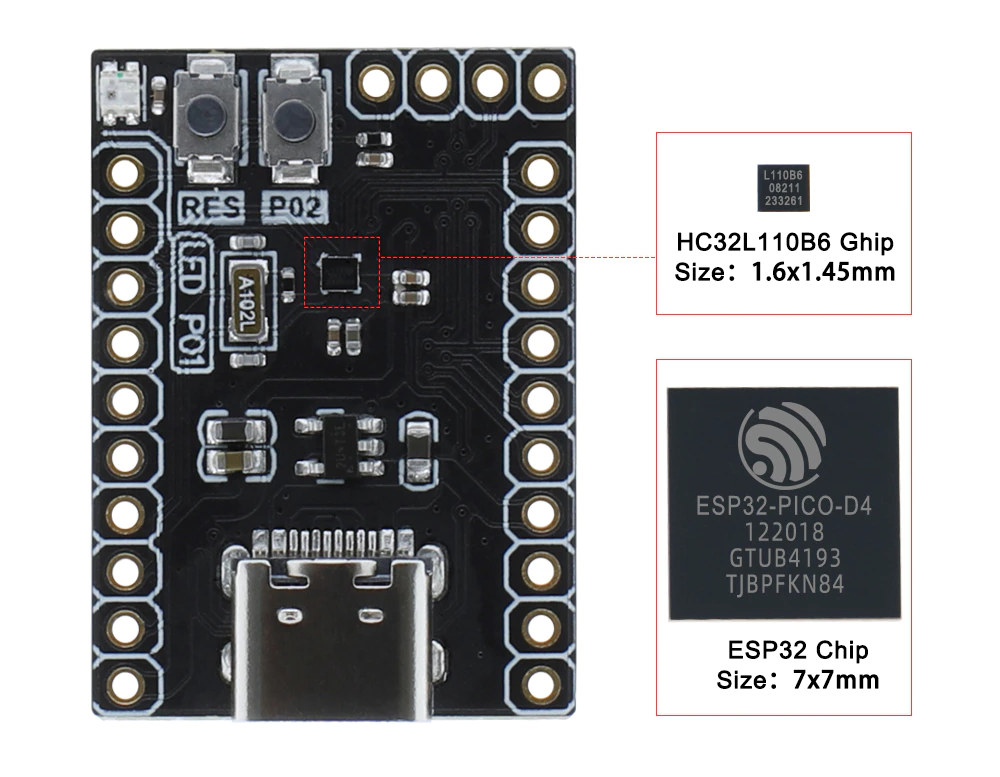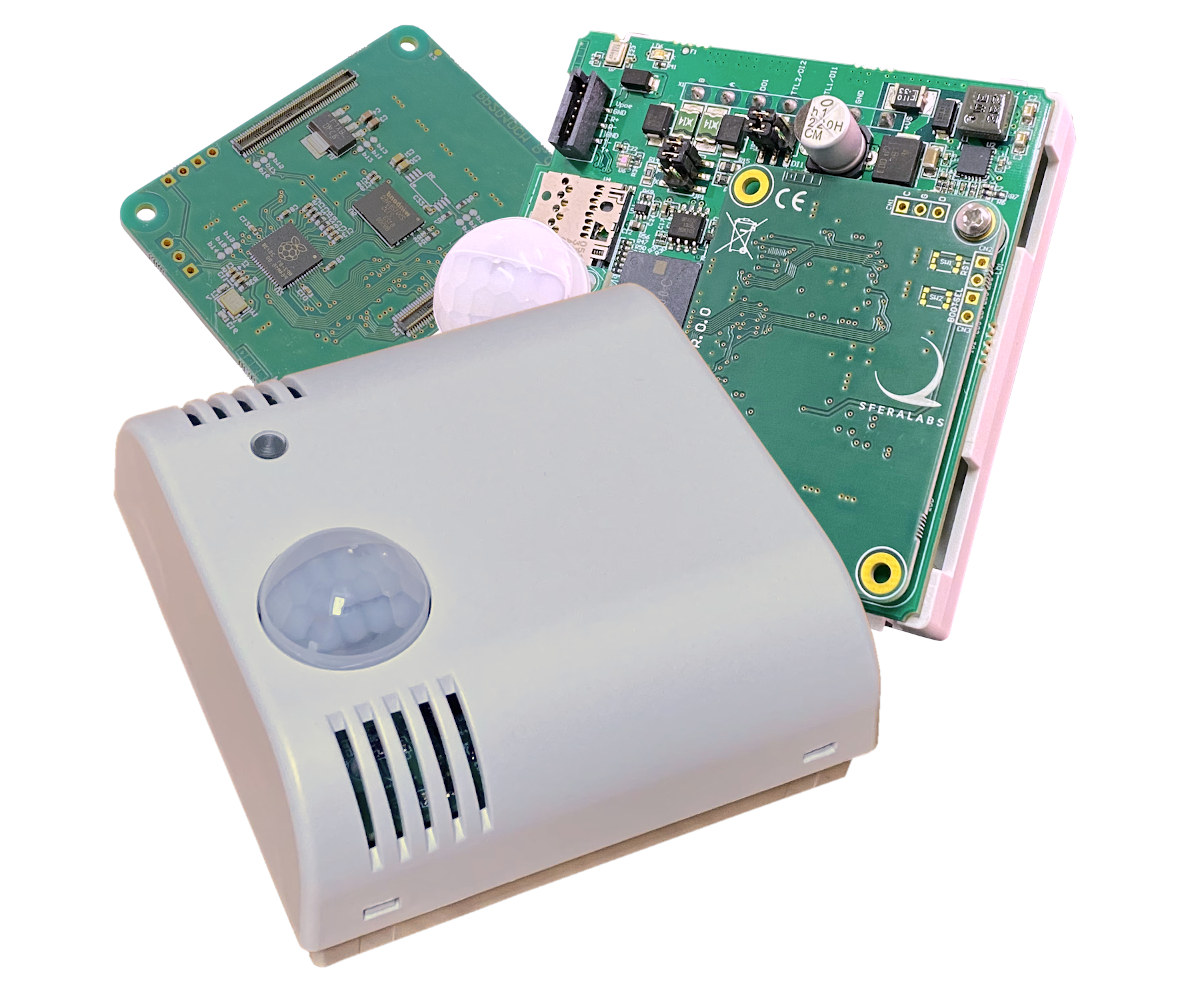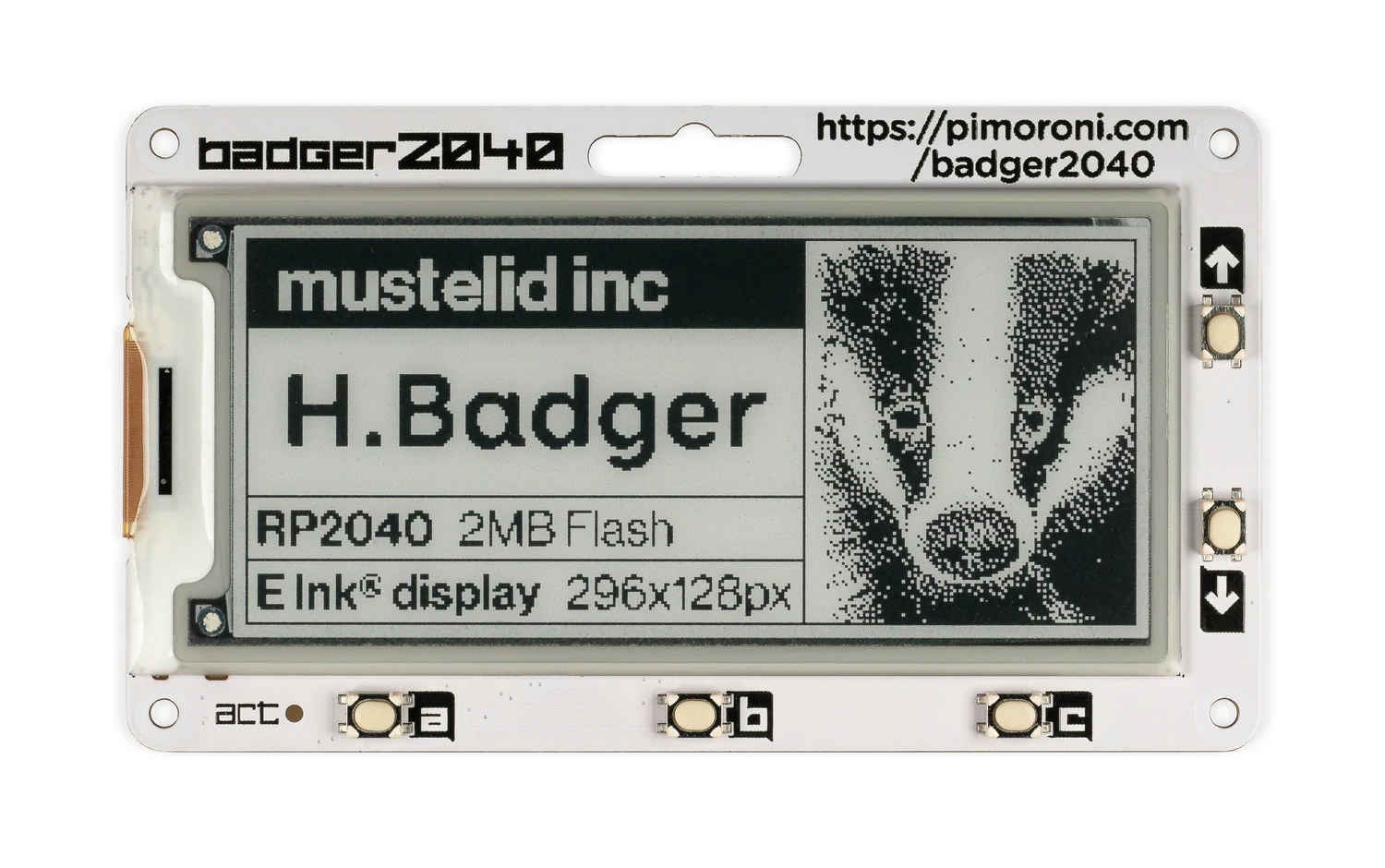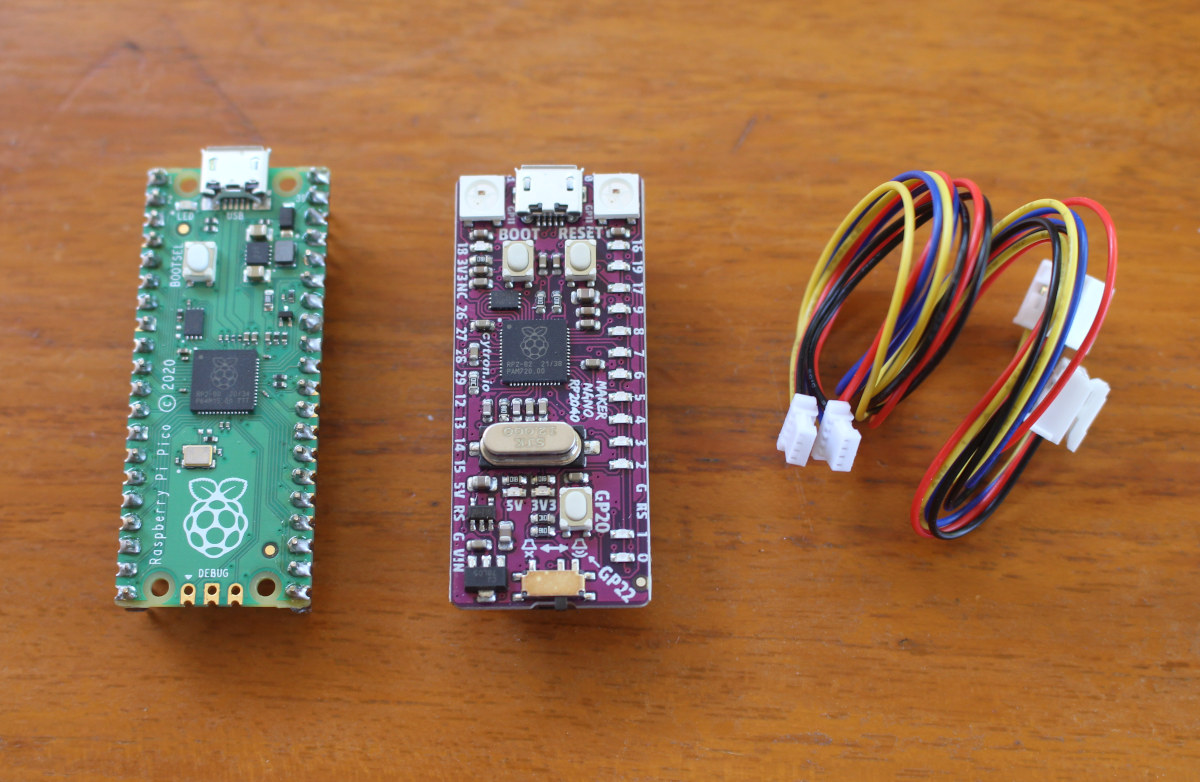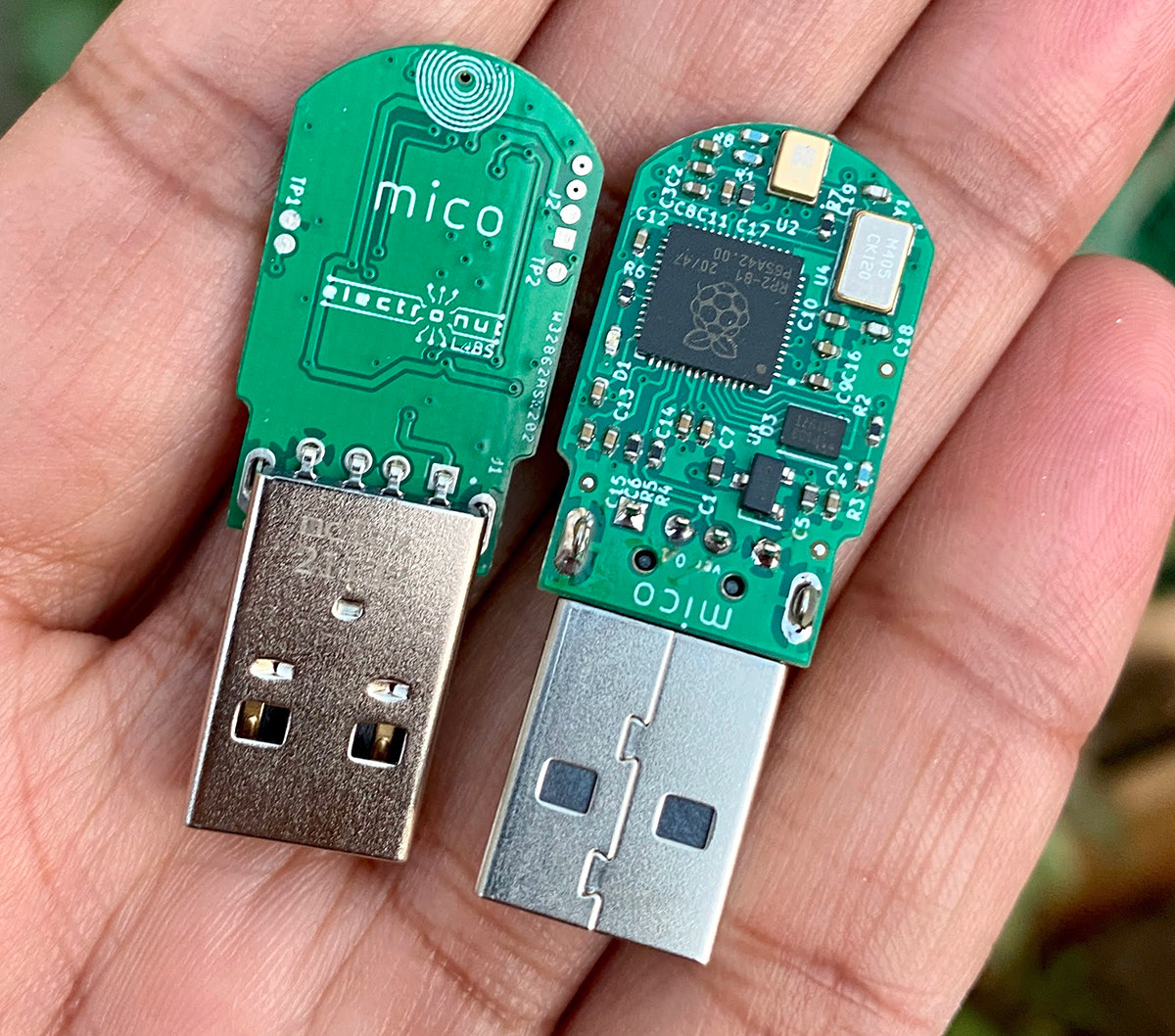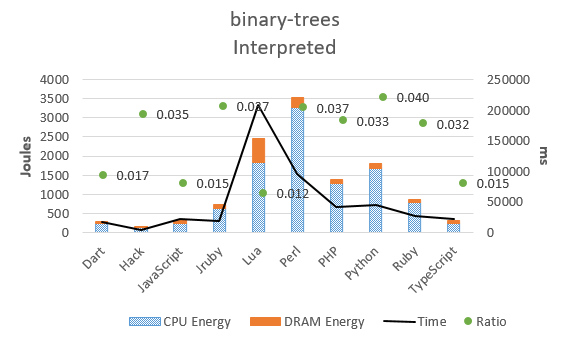We’ve recently written about ESP32-C3-0.42LCD board with ESP32-C3 wireless microcontroller, a 0.42-inch display, and a Qwicc connector for expansion. But it turns out the developer, 01Space, has also launched an almost identical board, RP2040-0.42LCD, with Raspberry Pi RP2040 MCU replacing the ESP32-C3 WiFi and Bluetooth MCU. RP2040-0.42LCD board specifications: SoC – Raspberry Pi RP2040 dual-core Cortex-M0+ microcontroller at up to 125 MHz, with 264KB SRAM Storage – 2 MB SPI flash Display – 0.42-inch OLED USB – 1x USB Type-C port for power and programming Expansion Qwiic I2C connector 7-pin and 8-pin headers with up to 11x GPIOs, 2x SPI, 2x I2C, 4x ADC, 1x UART, 5V, 3.3V, VBAT, GND Misc Reset and Boot buttons RGB LED, power LED Power Supply 5V via USB-C port or Vin VBAT pin for battery input 3.3V regulator with 500mA peak output Dimensions – 23.5 x 18 mm Weight – About 2.5 grams The […]
Linux 5.18 release – Main changes, Arm, RISC-V, and MIPS architectures
Linux 5.18 is out! Linus Torvalds has just announced the release on lkml: No unexpected nasty surprises this last week, so here we go with the 5.18 release right on schedule. That obviously means that the merge window for 5.19 will open tomorrow, and I already have a few pull requests pending. Thank you everybody. I’d still like people to run boring old plain 5.18 just to check, before we start with the excitement of all the new features for the merge window. The full shortlog for the last week is below, and nothing really odd stands out. The diffstat looks a bit funny – unusually we have parsic architecture patches being a big part of it due to some last-minute cache flushing fixes, but that is probably more indicative of everything else being pretty small. So outside of the parisc fixes, there’s random driver updates (mellanox mlx5 stands out, […]
LilyGO T-HC32 board with the world’s smallest Arm MCU (HC32L110B6) is now available for $9
HC32L110 Arm Cortex-M0+ MCU is found in a minuscule 1.59 x 1.436 mm CSP16 package that should make it the world’s smallest Arm MCU. LilyGO T-HC32 is one of the first boards with the HC32L110B6 microcontroller, and it is now available for $8.98 on Aliexpress including shipping. The board offers really basic features with two buttons, a WS2812 RGB LED, and two-row of ten pins each for GPIOs and power signals, plus a 4-pin header for SWD programming. There’s nothing really special about the board or its price, except for the MCU’s size that’s barely discernable from a discrete component, and much smaller than the 7x7mm ESP32-PICO-D4 system-in-package shown in the photo below for comparison. LilyGO T-HC32 board specifications: MCU – HDSC HC32L110B6 Arm Cortex-M0+ @ up to 32 MHz with up to 4KB RAM, up to 32KB flash memory Expansion – 2x 10-pin header with GPIO, UART, I2C, […]
Exo Sense RP – A Raspberry Pi RP2040-based multi sensor module
Sfera Labs Exo Sense RP is a multi-sensor module with a Raspberry Pi RP2040 microcontroller and various sensors to report temperature, humidity, air quality (VOC), light intensity, audio, and motion. The module can work as a standalone unit but can also communicate with a host through RS485 and USB interfaces, and supports expansion via surge-protected digital inputs and outputs. The Exo Sense RP is designed for indoor residential and commercial applications such as environmental monitoring and data logging, people and assets tracking, room management, access control, and more. Exo Sense RP specifications: MCU – Raspberry Pi RP2040 dual-core Arm Cortex M0+ @ 133 MHz with 264KB SRAM Storage – 16MB flash memory Communication ports RS485 half-duplex up to 115200 bps, with surge protection Micro USB 1.1 Type-B connector Sensors Sensirion SHT40 temperature and humidity sensor Sensirion SGP40 air quality (VOC) sensor Texas Instruments OPT3001 light intensity sensor TDK ICS-43432 digital […]
Badger 2040 is a programmable E-Ink display powered by Raspberry Pi RP2040
Pimoroni Badger 2040 is a Raspberry Pi RP2040 board equipped with a 2.9-inch black and white E-Ink display with 296 x 128 resolution and programmable with C/C++, MicroPython, or CircuitPython. The board is not just an ePaper badge, as it also comes with five buttons, and expansion capability through a Qwiic/STEMMA QT connector plus some pads with UART, I2C, interrupt, and power signals. Badger RP2040 specifications: MCU – Raspberry Pi RP2040 dual-core Arm Cortex M0+ running at up to 133Mhz with 264kB of SRAM Storage – 2MB QSPI flash Display – 2.9-inch B&W E Ink display with 296 x 128 pixels resolution, ultrawide viewing angles, ultra-low power consumption; Dot pitch – 0.227 x 0.226 mm USB – 1x USB Type-C port for power and programming Expansion Qwiic/STEMMA QT connector 10 pads with I2C, an interrupt pin, UART, SWC/SWD, 3.3V, GND Misc 5x front user buttons Reset and boot buttons (the […]
Maker Nano RP2040 offers Arduino Nano, Grove and Qwiic modules compatibility
Cytron Maker Nano RP2040 is board similar to Raspberry Pi Pico but with Arduino Nano form factor, a proper reset button, two RGB LEDs, single color LEDs for some GPIOs, a buzzer, as well as two Qwicc/STEMMA QT connectors that can also be used to connect Seeed Studio Grove modules using provided conversion cables. While the board mostly aims to be an Arduino Nano/Maker Nano upgrade, there are some notable differences with the I/O voltage being limited to 3.3V without 5V tolerance, and there are only four ADC inputs (A0 – A3) instead of eight on the Arduino Nano. Maker Nano RP2040 specifications: MCU – Raspberry Pi RP2040 dual-core Arm Cortex-M0+ microcontroller @ 125 MHz with 264KB internal RAM Storage – 2MB flash Audio – Piezo buzzer with mute switch Expansion 2x 15-pin headers with 22x GPIOs, 14x of which with LEDs,2x I2C, 2x UART, 2x SPI, 14x PWM, 4x […]
Mico – A USB microphone based on Raspberry Pi RP2040 MCU
Raspberry Pi RP2040 dual-core Cortex-M0+ microcontroller has found its way into Mico, a compact USB microphone with a PDM microphone providing better quality than cheap USB microphones going for one or two dollars or even 5 cents shipped for new Aliexpress users. The project started when Mahesh Venkitachalam (Elecronut Labs) was doing audio experiments with Machine Learning on the Raspberry Pi, and found out USB microphone dongles were extremely noisy with poor (distance) sensitivity, so he completed the project with a high-quality I2S microphone instead. He then had the idea of making his own USB microphone and found out Sandeep Mistry had already developed a Microphone Library for Pico, so he mostly had to work on the hardware that’s how Mico Raspberry Pi RP2040 USB microphone came to be. Mico specifications: MCU – Raspberry Pi RP2040 dual-core Cortex-M0+ microcontroller @ up to 133 MHz with 264KB SRAM Storage – 128Mbit […]
Save the planet! Program in C, avoid Python, Perl
As a former software engineer who’s mostly worked with C programming, and to a lesser extent assembler, I know in my heart that those are the two most efficient programming languages since they are so close to the hardware. But to remove any doubts, a team of Portuguese university researchers attempted to quantify the energy efficiency of different programming languages (and of their compiler/interpreter) in a paper entitled Energy Efficiency across Programming Languages published in 2017, where they looked at the runtime, memory usage, and energy consumption of twenty-seven well-known programming languages. C is the uncontested winner here being the most efficient, while Python, which I’ll now call the polluters’ programming language :), is right at the bottom of the scale together with Perl. The study goes through the methodology and various benchmarks, but let’s pick the binary-trees results to illustrate the point starting with compiled code. To the surprise […]


